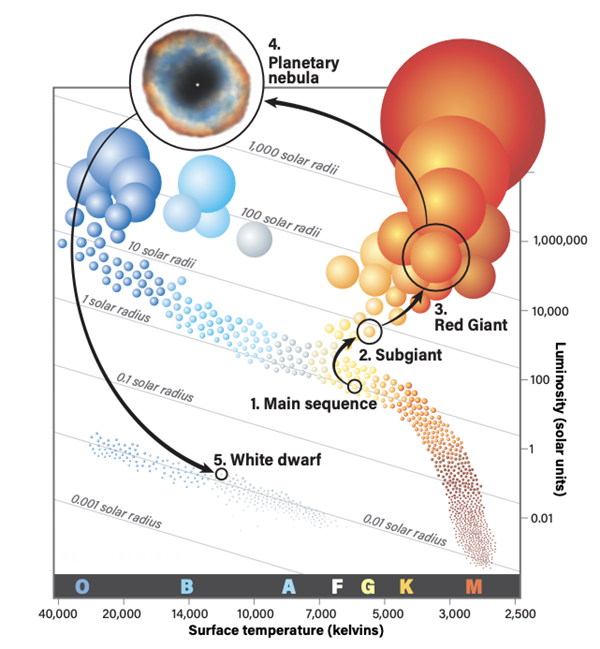
Will the Sun’s expansion into a red giant be gradual or explosive?
John Haley
Huntsville, Alabama
Stars use pressure created by nuclear fusion to combat gravity and stay “alive.” More accurately, this balance allows stars to stay in what is called hydrostatic equilibrium. Stars in the prime of their lives, fusing hydrogen into helium in their core, are in the main sequence. Stars like the Sun will spend approximately 80 percent of their lives in this phase. But each star has a limited supply of fuel, and it is estimated that in about 5 billion years, our Sun will cease hydrogen fusion and enter its red giant phase.
That’s the simple story. This transition from the main sequence to red giant is actually quite gradual, even by astronomical standards.
In 5 billion years, once the Sun uses most of the hydrogen in its core, the pressure holding back gravity falls out of equilibrium. At this point, our star will enter what is known as the subgiant phase. Internally, the Sun’s core will contract, which in turn will increase its temperature, igniting some more hydrogen fusion in a thin shell around the core. The layers outside the solar core will expand and, as a result, cool down. This expansion is gradual and takes about a billion years.
From there, the Sun will officially enter its red giant phase. The Sun’s radius will keep growing and its temperature will decrease slightly. The energy emitted by the Sun, however, will increase enormously. Inside the Sun, the core will keep collapsing since there will be no source of energy; additionally, because fusion is occurring in the shell outside the core, the core gets heavier, causing it to collapse further. As that happens, the core’s temperature increases.
This phase will last for about half a billion years. The red giant phase ends when the Sun’s core gets hot enough (about 100 million kelvins) to support the fusion of helium into carbon. Once that threshold is met, the Sun will shrink again as it enters this final stage of its nuclear fusion life.
Sarbani Basu
William K. Lanman Jr. Professor of Astronomy, Department of Astronomy, Yale University, New Haven, Connecticut









